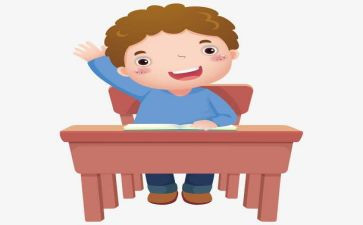教案的设计使教师在教学中更具针对性和灵活性,教案的存在使得教师能够在课堂上更好地引导学生进行自主学习和探索,以下是心得大全网小编精心为您推荐的幼儿英语英语教案参考7篇,供大家参考。

幼儿英语英语教案篇1
教学目标:
1、 知识与技能目标
(1) 听、说、读、写客厅里的物品——tv,chair ,couch,以及描述或介绍各个房间及房间里的物品的名称、颜色、位置等。
(2)能够牢固掌握现在进行时,并将之灵活运用到课文图片的谈论及实际生活中,就家人在家里的'活动用现在进行时进行简单、准确的描述。
2、 过程与方法目标
激发学生听英语、说英语、用英语和他人进行交流的兴趣,敢于用英语进 表达,并能主动利用语言环境大胆实践。
3、 情感态度与价值观目标
(1)鼓励学生根据所学知识谈论自己家客厅的物品及家人,使之能在小组活动中积极参与他人合作,互相帮助,增强学生的团结合作意识。
(2)通过学习客厅物品及能家人的描述,学生珍惜亲情,热爱家庭,增强学生对家的热爱及对父母的尊重。
教学难点:
( 1) 变现在分词 的不同方法。如 : playing , reading , watching ,writing ,sitting
(2)掌握现在进行时以及能够熟练运用。
教学课时:
一课时。
教学过程:
step 1 greeting and class opening
t:yesterday we made supper in the kitchen.yes?
the peas are delicious,yes or no?
today we are going to the livingroom to see “what’s in the livingroom?”
do you want to go and see?
so do you remember,in a house, we have the——tegether,one two
step 2 revision
①read together:livingroom、bedroom、kitchen、bathroom
②t:“and we have many many things。this is the . this is the .”
③read together:toilet、tv、bed
④t:“i know,the bed is in the bedroom,yes or no?
what’s in the kitchen?” ask someone to say the things in the livingroom with
“the is in the livingroom.” then read together. the teacher guides to make dialogue with “what’ s in the bathroom/ livingroom?”,review “dish、toilet、tv”。
step 3 new concepts and practice
what’s in the livingroom?
①t:“now there is a livingroom,what’s in the livingroom?
one,two——(read together)” what else is in the livingroom?
(teach to read “couch”, reading one by one.) i can read the newspaper on the couch.what can you do on the couch?
(show the fingers to spell “couch”,and the spelling speed will become faster)
②say “what’s in the livingroom?”: read “picture、lamp/table、flowers/tv、chair、couch”by actions.
③t:“what’s in the livingroom?
the picture is in the livingroom. what else is in the livingroom ?”
(students answers with “the is in the livingroom.”)
④talk about with their partners:“what’s in the livingroom?
the is in the livingroom.”
⑤show their dialogues:“what’s in the livingroom?
the is in the livingroom.”
step 4 practice
“what are they doing?”
①t:“this is a beautiful livingroom,yes?but do you want to know,who lives in the livingroom?”
②listen to the tape for “number2 what are they doing?”
③ask a child to read “number2 what are they doing?”
④playing a competition for p1 and p2
t:“who is he?where is he?who are they?where are they?”
( re a d a f t er the l ittle“teacher”)
⑤t:“but,now let’s look,what are they doing?”(play the tape, the children follow the recorder.)
⑥teach “-doing”:watching tv、playing cards、reading the newspaper、 writing a letter
⑦go on playing a competition for p1 and p2:“what are they doing?”or “what’s he/she doing?”a.“let’s go to jenny’s house.”b.make a dialogue with par tners
⑧t:“what am i doing?what are you doing?what’s he/she doing? what are they doing” (asking、answering and doing the actions)
⑨playing and talking by roles:师生扮演角色,情景对话模拟在线
step 5 “good bye children”and class closing
课堂练习
请学生布置一间living room ,在教室前面摆放一些物品:台灯、一些花、几本书、钢笔等物品,教师进行描述。
学生把物品陈列到相应的位置或画到黑板上。用下列一些句子:this is a living room . there is a chair/ couch/ desk/ picture/ window in the living room. there are fiower on the table . this is a lamp beside the couch . there are books on top of the tv. class closing :hello!are you happy ?
good bye !
作业安排
回家后用英语说说自己房间里的陈设物品。
幼儿英语英语教案篇2
教学目标
1.认读follow me、stand up、sit down并会作相应动作。
2.在游戏中巩固对单词stand up、sit down的读音。
3.课堂用语:hello.
活动准备
苹果、梨子卡片各一张、木偶一个、大灰狼头像、气锤一个
教学过程
一、warm-up time课前热身
1.复习:《good morning》、《apple apple i love you》
2.问候与对话:
t:hello,children!
s:hello,ivy!
3.复习单词apple、pear,hitting game。
二、展示知识点
1.木偶出现,跟幼儿说hello,让幼儿跟做手偶的动作。引出单词stand up、sit down并跟木偶做动作。
2.跟老师做动作并说单词。
三、玩游戏巩固知识点
大灰狼来了游戏--请5-8名幼儿围成一个圈或自由走动,听着follow me 的歌曲,当大灰狼出来了,老师说sit down,幼儿回位置坐下。如此类推玩第二轮。
活动反思:
warming改了一点点,把音乐调慢了,让幼儿能够跟得上音乐的节奏并跟唱,还让幼儿自由走动,跟做动作,幼儿比较有兴趣。在游戏过程中幼儿愿意跟你玩,在变换速度的时候特别感兴趣。在玩之余能够学到本领。
幼儿英语英语教案篇3
活动目标:
1、理解单词含义,学说新单词。
2、感受英语游戏的快乐,愿意学英语。
活动准备:
1、木偶一个。
2、红苹果、绿橘子、黄香蕉、蓝气球各一个。
3、红、绿、黄、蓝颜色颜料、可乐瓶子两个
活动过程:
一、复习颜色单词,引出活动。
以木偶和幼儿打招呼,复习上次活动单词,并引出新单词。
师:1、“hello hello”是谁在和小朋友打招呼啊?(mary)
2、出示红苹果what’s this?(这是什么?)苹果是什么颜色的呢?用英语怎么说?
3、出示绿橘子what’s this?那这个又是什么颜色的呢?用英语说。
4、小朋友真棒,表扬表扬自己。(very very good)
二、学习新单词。
1、yellow
mary拿出黄香蕉,what’s this? 它是什么颜色的?黄色的英语叫“yellow”,全体幼儿看着香蕉跟着老师说“yellow”,走一圈请幼儿边摸香蕉边说“yellow”并采用变换高低请幼儿用不同音量读单词。
2、blue
mary出示蓝气球,what’s this? 它的颜色是什么?蓝色叫“blue”,全体幼儿看着气球跟着老师说“blue”,教师利用吹气球的方式请幼儿根据气球大小用不同音量来读单词,然后再放气慢慢变小来读,可请配班老师帮着吹气球,老师带着幼儿读,注意停顿,并读清楚。
3、分组读单词.....................
幼儿英语英语教案篇4
活动目标
1.帮助幼儿理解和掌握的“鸭”字和外国的“duck”字。
2.通过表演、连线等游戏形式,复习以前所学的单词;加强对幼儿手指点读、按顺序传书能力的培养。
3.激发幼儿继续学习英语的'兴趣。
活动准备
1.英文和中文字卡若干;教学图片4张。
2.连线图4张;笔4支。
3.幼儿围座成半圆形,每张椅子上贴有不同的英文字卡;幼儿每人胸前贴有不同的种文字卡。
4.幼儿双语用书每人一本。
活动过程
一.幼儿听音乐,进行游戏“我的位置在哪里”,引起幼儿兴趣。
1. 幼儿听音乐,根据自己身上的卡片,找相应的座位。
2. 幼儿相互介绍自己身上的字和板凳上的字。
3. 请幼儿向大家介绍自己身上和凳子上的字。
二.通过表演游戏“猜单词”,复习巩固以前所学的单词。
1.一名幼儿抽取卡片,通过动作或声音表演卡片中所写的单词,其它幼儿猜单词。
三.幼儿理解和掌握新词“鸭”和“duck”。
1.教师出示图片,介绍鸭宝宝;帮助幼儿认识的“鸭”字和外国的“duck”字并讲述故事。
2.通过提问的方式帮助幼儿熟悉的“鸭”字和外国的“duck”字。
3.幼儿与教师共同扮演鸭宝宝,引导幼儿理解的“鸭”字和外国的“duck”字。
4. 幼儿找出图片中,的“鸭”字和外国的“duck”字。
5. 教师手指的“鸭”字或外国的“duck”字,请幼儿用不同速度的鸭子走的动作来区别它们。
6. 请幼儿找出黑板上的的“鸭”字和外国的“duck”字和他们一起做游戏。
7.引导幼儿认识外国的“duck”字
(1)引导幼儿看图片,讨论外国的鸭字里有哪些字母,
并启发幼儿做出动作。
(2)教师边讲故事边表演,引导幼儿观看,并告诉幼儿,
各个字母逐个点合成为外国的“duck”。
(3)引导幼儿扮演字母,表演故事。
三.引导幼儿看书,进一步认识的“鸭”字和外国的“duck”字。
1.引导幼儿传书,发展幼儿的良好的行为习惯。
2.引导幼儿翻书,并听录音带点读故事,从而进一步认识的“鸭”字和外国的“duck”字。
四.连线竞赛游戏,帮助幼儿复习所学单词,包括的“鸭”字和外国的“duck”字。
1.幼儿分成四组进行竞赛游戏。
幼儿英语英语教案篇5
character: lion
ra it a
ra it b
teddy bear a
teddy bear b
l: hello, everyone. i'm lion. today is my birthday. i'm very ha y. i dre ed beautiful. i prepared a delicious cake for my friends. i'm busy.
r: hello, everyone. i'm ra it. today is lion's birthday. let's go lion's home. (song: walking, walking, walking, walking, jump, jump, jump, jump, jump, jump, ru ing, ru ing, ru ing, ru ing, ru ing, ru ing, now let's go, now let's go.)
场景一:门铃响了,狮子去开门。
l: who?
r: i'm ra it.
l: good morning, ra its.
r: good morning, lion. how are you?
l: i'm fine, thank you. come in please.
r: thank you.
r: ha y birthday. (把礼物给狮子)here you are. we hope you like.
l: thank you. sit down please. please, please(拿出一些吃的请小兔子们吃)
r: thank you.
teddy bear : hello, everyone. i'm teddy bear. today is lion's birthday.
we prepared a present for him. let's go lion's home. (song: teddy bear, teddy bear, walk, walk, walk. teddy bear, teddy bear, hop, hop, hop, teddy bear, teddy bear, run, run, run, teddy bear, teddy bear, jump, jump, jump. )
场景二:门铃响了,狮子再次去开门。
l: who?
b: i'm teddy bear.
l: good morning, teddy bears.
b: good morning, lion. how are you?
l: i'm fine, thank you. come in please.
b: thank you. ha y birthday. (把礼物给狮子)here you are.
l: thank you. sit down please. please, please. (拿出一些吃的请小熊吃)
l: time is up. let's enjoy the birthday cake, ok?
b,r,l: (最后齐唱生日快乐歌)song: ha y birthday to you. ha y birthday to you. ha y birthday to you. ha y birthday to you.
teddy bears, ra its: ha y birthday lion.
幼儿英语英语教案篇6
(一)活动目标:学习正确读准、认识单词daddy、mommy、grandpa、grandma,并了解其含义。
(二)活动准备:flashcard:daddy、mommy。
(三)活动过程:1.sayhello(打招呼):
师:今天我们班上来了好多客人,小朋友们应该和客人说什么呀?(教师做hello动作提醒幼儿)
师:我们一起唱一首好听的英文歌送给大家好吗?
师幼共唱《hellosong》。
2.warmup(热身运动):
肢体动作:standup,sitdown,run,jump,turnaround??
3.teaching(教学):
①师:doyouwanttoknowwhat’sbehindme?你想知道谁在我后面吗?(想)可是啊,它要求小朋友数到3才肯出来呢!我们一起来好吗?showmeyourhands.one,two,three.咦,它还是不肯出来,wetrytoagain.我们再来一次。(师互动幼儿举出手指数one,two,three)②(出示flashcard:daddy)whoishe?他是谁呢?(幼儿说说)heismydaddy!他是我的爸爸。(幼儿学念:daddy)
(出示flashcard:mommy)whoisshe?她是谁呢?(幼儿说说)sheismymommy.她是我的妈妈。(幼儿学念:mommy)
我们来和daddy,mommy打个招呼吧。say:hello,daddy!hellomommy!
③kiinggame:依次请幼儿说:hellodaddy/mommy.
4.jumpinggame:
①以唱歌《where’smydaddy/mommy?》的形式请两位幼儿分别扮作daddy和mommy。②教师说明游戏规则。
③教师指挥游戏:教师随机喊daddy或mommy,两名幼儿尝试游戏。
④教师互动其他幼儿喊daddy或mommy,参与游戏幼儿进行jumpinggame.5.saygoodbye(说再见)。
幼儿英语英语教案篇7
材料准备:
头饰:春风、春姑娘、树、草、花、小鸟。
游戏过程:
教师旁白:春风吹来了。(风上场)
"春风"说:i‘m wind.(回头,招手)sping is coming.(春姑娘上场)"春姑娘"说:i’m sping.(春风和春姑娘开始围绕着树、草、花做小跑步)树开始发芽,小草也钻出了地面,花儿也长出了花苞。
"树"说:"i‘m tree. i’m green!"
"小草"说:"i‘m grass. i’m green,too."
教师旁白:花儿也穿上了美丽的衣裳。
"一朵花儿"说:"i‘m red flower."
另一朵花儿说:"i’m yellow flower."
另一朵花儿说:“i‘m white flower."
教师旁白:小鸟在窝里,听到了小草、花儿和大树们的谈话,也飞来了。(小鸟上场)
"小鸟"说:"i’m a bird.(小鸟飞来飞去看春天的景色)i like spring.""小草"、"小花"和"树"一齐喊:"bird,bind."(小鸟飞到它们跟前)"树"说:"let‘s go to play."
"草"、"花儿"、"鸟儿"齐说:"let’s go to play."
幼儿英语英语教案参考7篇相关文章: